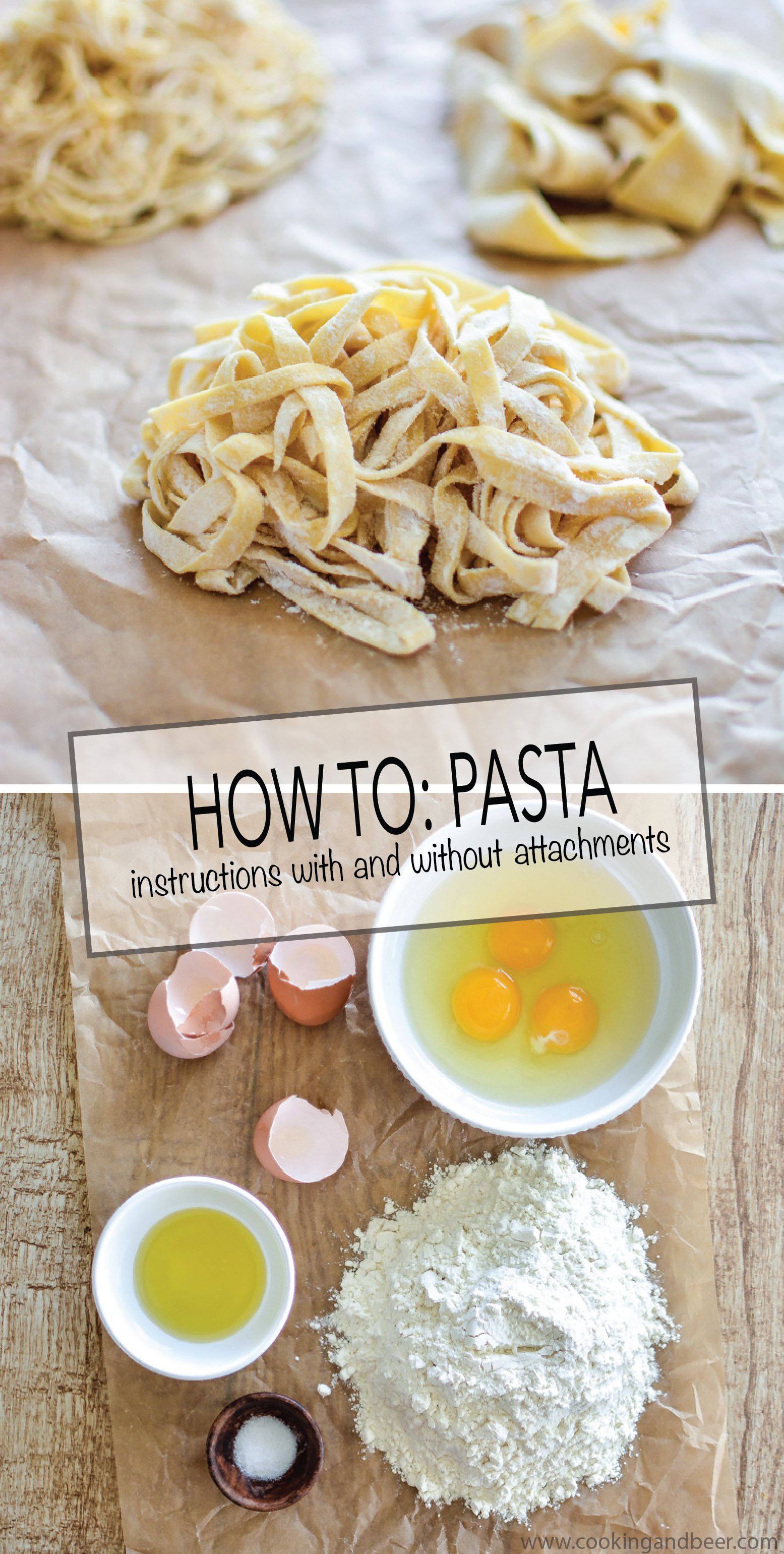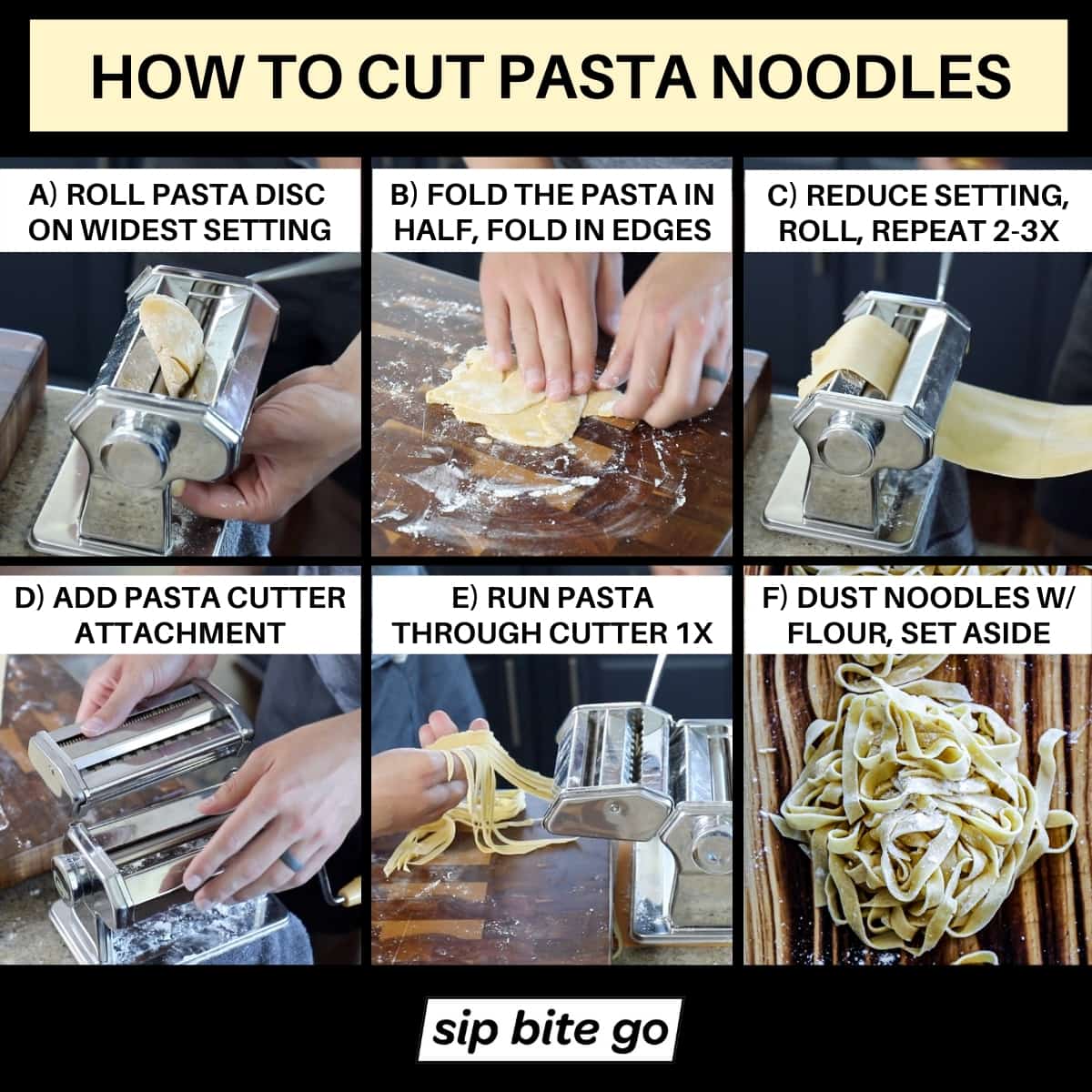Introduction to Pasta Making

Making pasta from scratch is one of those magical culinary experiences that can transform a simple meal into something extraordinary. It’s about more than just mixing flour and eggs; it’s a process filled with creativity, tradition, and a bit of science! Plus, the satisfaction of twirling your own homemade noodles on a fork is truly unbeatable. In this guide, we’ll walk you through each step of the pasta-making process and provide video instructions to make it even easier. Let’s dive in!
Also Read This: How to Use Chromecast with Dailymotion to Stream Videos from Your Phone to TV
Essential Ingredients for Homemade Pasta

Before you roll up your sleeves and get cooking, it’s crucial to gather the right ingredients. Making pasta is simple, but the quality of your ingredients can elevate your dish significantly. Here’s what you’ll need:
- Flour: The star of the show! You can use all-purpose flour, but for a more authentic taste, opt for 00 flour which is fine and gives pasta a silky texture.
- Eggs: Fresh eggs will add richness and flavor. Generally, you’ll need about 1 egg for every 100 grams (3.5 ounces) of flour.
- Salt: A pinch of salt enhances the flavor of the dough. Use about 1 teaspoon for every 2 cups of flour.
- Water: Depending on the humidity and your flour, you might need a bit of water to adjust the dough’s consistency.
Here’s a quick table to summarize the ingredient ratios:
| Ingredient | Amount |
|---|---|
| Flour | 100 grams (3.5 ounces) |
| Eggs | 1 egg |
| Salt | 1 teaspoon |
| Water | As needed |
Once you have these ingredients, you’re ready to kick off your pasta-making adventure! The beauty of homemade pasta lies in its versatility, so feel free to experiment with flavors. You can infuse your dough with herbs or even add spinach for a vibrant green twist.
Also Read This: How to Download Dailymotion Videos – Complete Guide for Users
3. Tools and Equipment Needed
Before diving into the world of homemade pasta, it's essential to gather your tools and equipment. Don’t worry; you probably have most of these items in your kitchen already! Here's what you'll need:
- Mixing Bowl: A large bowl to mix your ingredients is crucial. Look for one that can hold at least 4 quarts.
- Measuring Cups and Spoons: Accurate measurements are key in baking, including pasta making. Invest in a good set!
- Rolling Pin: While you can use a wine bottle in a pinch, a rolling pin will help you achieve that perfect thinness.
- Pasta Machine (optional): If you want to take your pasta game up a notch, a pasta machine makes rolling and cutting your dough a breeze.
- Knife or Pizza Cutter: For cutting your dough into desired shapes. A sharp knife works just fine!
- Flour for Dusting: Keep some extra flour handy to prevent the pasta from sticking.
- Fork: This is useful for mixing your eggs and flour, giving your dough a good start.
- Clean Surface: A countertop or large wooden board is perfect for rolling out your dough.
Once you’ve gathered these tools, you're ready to start your pasta-making adventure! Having the right equipment not only makes the process smoother but also enhances the final product.
Also Read This: A Complete Guide to Screencasting Dailymotion Videos on Windows
4. Step-by-Step Instructions for Making Pasta
Now that you’re all set with your tools, let’s jump into the step-by-step instructions for making your homemade pasta. Follow these easy steps, and you'll be enjoying delicious pasta in no time!
- Mix Your Ingredients: In your mixing bowl, combine 2 cups of all-purpose flour and a pinch of salt. Make a well in the center and crack in 3 large eggs. Using a fork, gently whisk the eggs, gradually incorporating the flour from the edges until everything is combined.
- Knead the Dough: Transfer your dough onto a clean surface and begin kneading. Push the dough away from you, fold it over, and repeat this process for about 10 minutes until it’s smooth and elastic. If it’s sticky, sprinkle a little more flour.
- Rest the Dough: Wrap your kneaded dough in plastic wrap or cover it with a damp cloth. Let it rest for at least 30 minutes. This step is crucial as it allows the gluten to relax, making rolling easier.
- Roll Out the Dough: After resting, divide your dough into four equal parts. Take one piece and flatten it slightly with your hand. Using your rolling pin (or pasta machine), roll it out to your desired thickness. Aim for 1/16 of an inch for traditional pasta.
- Cut the Pasta: Once rolled out, dust the surface with flour to prevent sticking. Use a knife or pizza cutter to slice the dough into strips for fettuccine or squares for ravioli. Don’t forget to dust the cut pasta with more flour!
- Cook the Pasta: Bring a large pot of salted water to a boil. Add your fresh pasta and cook for about 2-4 minutes, depending on the thickness. Fresh pasta cooks much quicker than dried pasta, so keep an eye on it!
- Serve and Enjoy: Drain the pasta and toss it with your favorite sauce. Whether it's a rich marinara or a simple olive oil and garlic, homemade pasta is sure to impress!
And there you have it! With these simple steps, you’ll create fresh pasta that can elevate any meal. Make sure to check out our video instructions for visual guidance and additional tips. Happy cooking!
Also Read This: Is Dailymotion Safe in 2018? Evaluating Its Security Measures
5. Common Mistakes to Avoid When Making Pasta
Making pasta at home is a delightful experience, but it can be easy to slip up. Here are some common mistakes to watch out for:
- Using the wrong flour: Not all flours are created equal! For pasta, you want to use semolina flour or “00” flour if possible. All-purpose flour can work, but it won’t yield the same texture.
- Not enough salt: Water should be as salty as the sea. This is your only chance to season the pasta itself, so don’t skimp!
- Over-kneading or under-kneading: Knead just until the dough is smooth and elastic. Too much kneading can make the pasta tough, while too little will leave it crumbly.
- Rolling too thin or too thick: Aim for a thickness of about 1-2 mm. If your pasta is too thick, it’ll be chewy; too thin, and it might fall apart.
- Not letting the dough rest: After kneading, wrap your dough in plastic wrap and let it rest for at least 30 minutes. This relaxes the gluten, making it easier to roll out.
- Cooking pasta without enough water: Use a large pot and plenty of water to give your pasta room to move. This prevents it from sticking together.
By avoiding these common pitfalls, you'll be on your way to creating delicious homemade pasta that impresses everyone at your table!
Also Read This: A Journey Through Scottish History Exploring Educational Content on Dailymotion
6. How to Cook Your Pasta Perfectly
Cooking pasta might seem straightforward, but there’s an art to getting it just right. Here’s a step-by-step guide to ensure your pasta is cooked to perfection:
- Boil the water: Fill a large pot with water and bring it to a rolling boil. Use about 4-6 quarts of water for every pound of pasta.
- Add salt: Once boiling, add a generous amount of salt to the water. This is crucial for flavor—think about 1-2 tablespoons.
- Add the pasta: Gently place your pasta into the boiling water. Stir immediately to prevent sticking.
- Check the cooking time: Refer to the package instructions, but start checking a minute or two earlier. Aim for al dente, which means firm to the bite.
- Taste test: The best way to know if your pasta is ready is to taste it. It should be cooked through but still have a slight bite.
- Reserve some pasta water: Before draining, scoop out a cup of the starchy water. This can help with sauces later on.
- Drain and rinse (if necessary): Drain your pasta in a colander. If you’re making a cold pasta salad, rinse with cold water to stop the cooking process.
- Combine with sauce: Toss your pasta with your chosen sauce while it’s still hot. If the sauce is too thick, add a bit of the reserved pasta water to loosen it.
By following these steps, you’ll achieve perfectly cooked pasta every time, ready to be enjoyed with your favorite sauces and toppings!
Also Read This: How to Do Manicure and Pedicure at Home on Dailymotion: A Complete Guide for Gorgeous Nails
7. Serving Suggestions and Sauce Pairings
Now that you’ve mastered the art of making fresh pasta, it’s time to think about how to serve it! The beauty of homemade pasta is that it pairs wonderfully with a variety of sauces and toppings. Here are some delicious serving suggestions:
- Classic Marinara: A simple tomato sauce made with ripe tomatoes, garlic, and fresh basil. It’s a timeless pairing that lets your pasta shine!
- Alfredo Sauce: This creamy sauce made from butter, cream, and parmesan cheese is perfect with fettuccine. Add grilled chicken or sautéed shrimp for some protein.
- Pesto: A vibrant blend of fresh basil, pine nuts, garlic, and olive oil. Toss it with your favorite pasta shape for a fresh, herbaceous flavor.
- Carbonara: For a rich and indulgent twist, try this Roman classic made with eggs, cheese, pancetta, and pepper. It’s the ultimate comfort food!
- Ragù: A hearty meat sauce that simmers for hours, filling your kitchen with mouthwatering aromas. Serve it over tagliatelle or pappardelle for a filling meal.
Don’t forget the toppings! Grate some fresh parmesan or pecorino cheese over the top for an added layer of flavor. A sprinkle of cracked black pepper or a drizzle of high-quality olive oil can elevate your dish even further.
For a lighter option, consider tossing your pasta with sautéed vegetables. Think zucchini, bell peppers, and cherry tomatoes drizzled with a little olive oil. Not only does this add color to your plate, but it also packs in the nutrients!
And let’s not forget about the side dishes. A fresh green salad dressed in lemon vinaigrette pairs beautifully with any pasta dish. Garlic bread or bruschetta is also a fantastic companion, perfect for soaking up those delicious sauces!
8. Conclusion and Final Tips
Congratulations on making your own pasta! It’s an incredibly rewarding experience, and with a little practice, you’ll feel like a pro in no time. Here are some final tips to keep in mind:
- Practice Makes Perfect: Don’t worry if your first batch isn’t perfect. Each time you make pasta, you'll learn and improve your technique.
- Experiment: Try different flour types or add flavors to your dough, like herbs or spinach, for unique pasta. The possibilities are endless!
- Storage: If you make more pasta than you can eat, refrigerate it for a few days or freeze it. Just be sure to dust it with flour to prevent sticking!
- Video Help: If you’re unsure about your technique, check out our video instructions! Visual cues can be incredibly helpful, especially with kneading and rolling.
Finally, enjoy the process! Making pasta is not just about the food; it’s about the joy of cooking and sharing meals with loved ones. So gather around the table, enjoy your delicious creations, and don’t forget to take a few pictures of your culinary masterpiece!
 admin
admin








